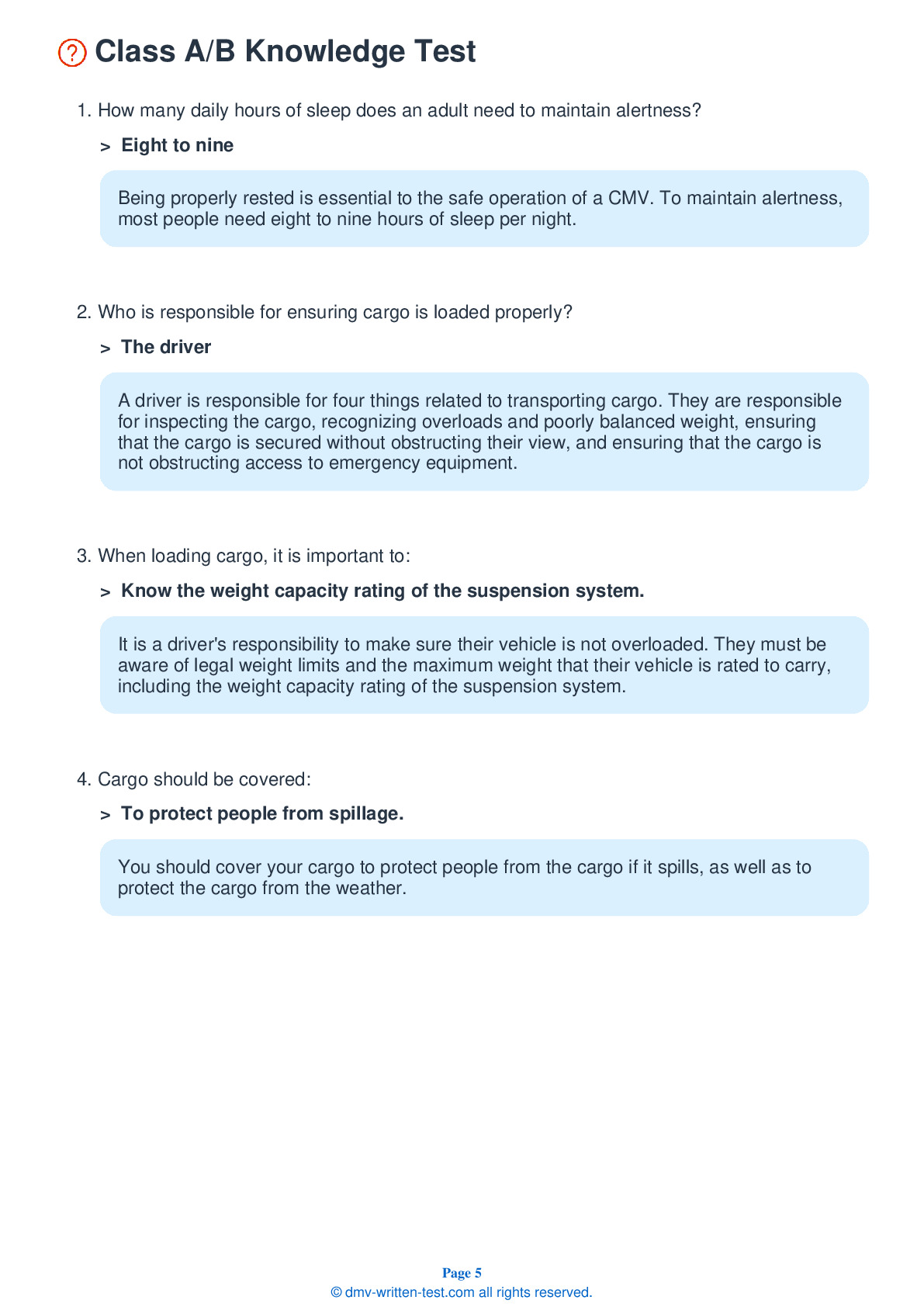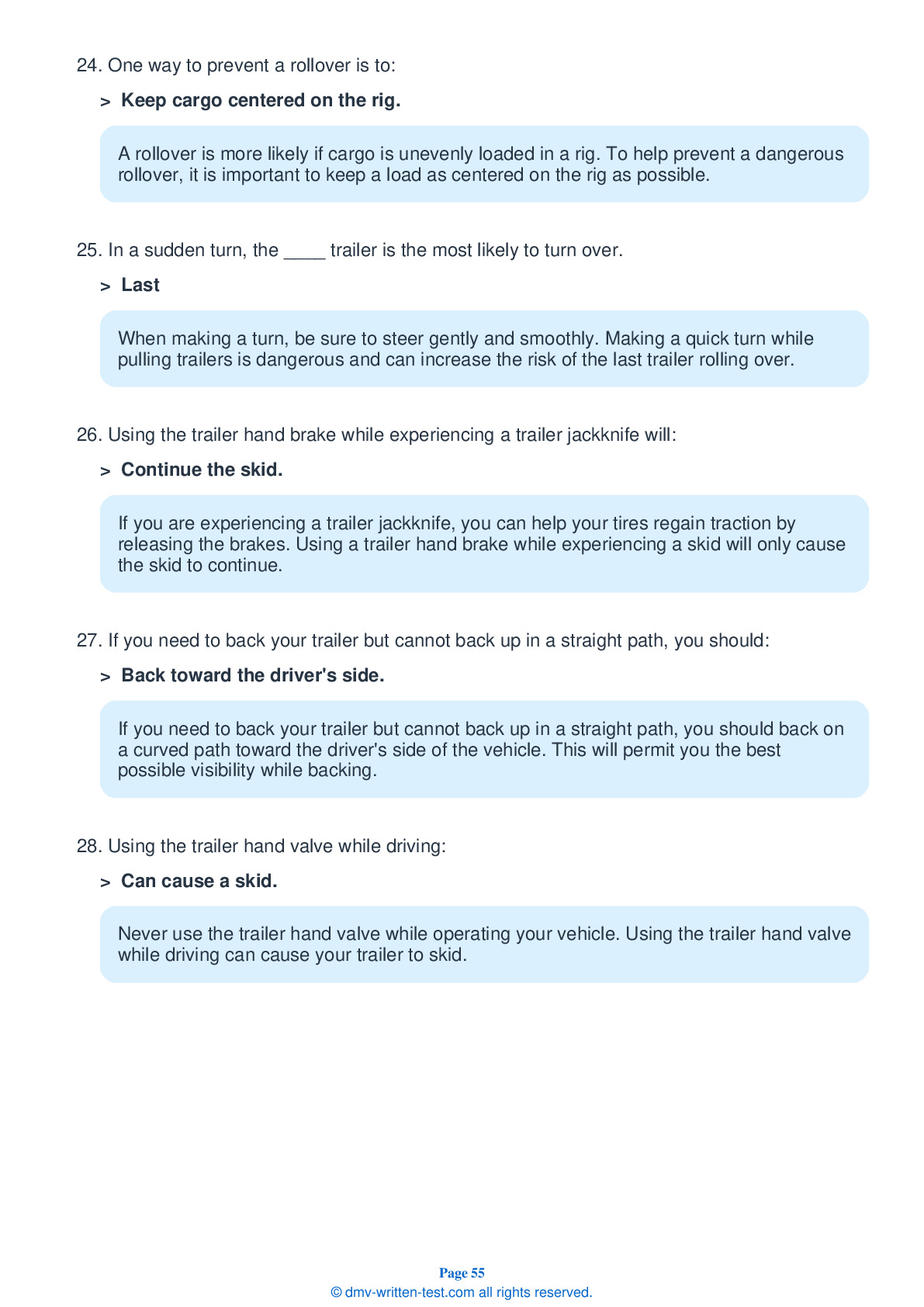Air Brakes
This endorsement is required for driving a vehicle with air brakes. To receive this endorsement, applicants must pass a written test. The test consists of 25 multiple choice questions. Each question has three or four answer choices. To pass, the applicant must answer at least 20 questions correctly. Test questions come from the Connecticut Commercial Driver License Manual. Questions come from the chapter covering: Air Brakes. The Air Brakes endorsement may be used with the Class A, B or C CDL.
Number of Question
Passing Score
19. During an applied leakage test, the maximum leakage rate for a single vehicle with air brakes is:
Explanation
It is important to know the maximum air loss rate that is safe for your specific vehicle. A single vehicle with air brakes should have a leakage rate no higher than 3 psi in a minute during an applied leakage test.
20. To ensure normal stopping power, drivers of vehicles equipped with a front brake limiting valve should:
Explanation
Some pre-1975 vehicles have a front brake limiting valve, which has "normal" and "slippery" settings. The idea behind these valves was to limit the air pressure available to the front brakes when driving on slippery surfaces, and thereby reduce the danger of a front-wheel skid. Studies have found that this is not actually a concern, so if your vehicle has a front brake limiting valve, leave it in the "normal" position.
21. A low air pressure warning signal:
Explanation
Any vehicle with air brakes must be equipped with a low air pressure warning signal.
22. To use the stab braking method in an emergency situation, you should:
Explanation
The stab braking method for emergency stops involves fully applying the brakes until they lock up. The brakes are then released until the wheels start rolling, then the process is repeated.
23. While driving downhill, you should brake until you reach a speed that is ____ below your safe speed, then release the brake pedal.
Explanation
While driving downhill, you should hold down the brake pedal until your vehicle reaches a speed 5 mph below your safe speed, then release the brake pedal. Repeat this process.
24. During an applied leakage test, the maximum leakage rate for a triple combination vehicle is:
Explanation
It is important to know the maximum air loss rate that is safe for your specific vehicle. A triple combination should have a leakage rate no higher than 6 psi in a minute during an applied leakage test.
25. Brakes may get out of adjustment:
Explanation




